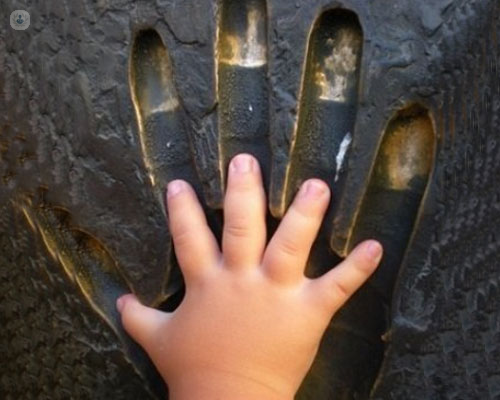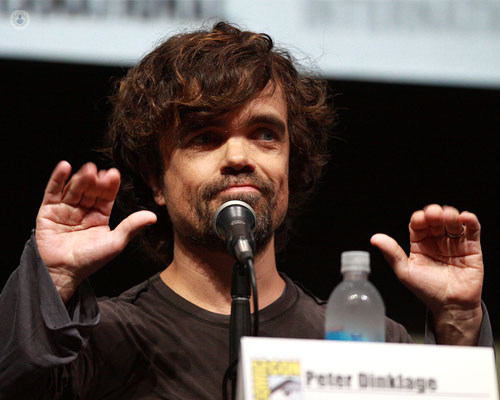What is achondroplasia?
Written by:Achondroplasia or dwarfism is a genetic disorder that affects the growth of bones. The doctor. Galo García Fontecha, author of the article, is a renowned researcher and specialist in Child Traumatology and Orthopedic Surgery, expert in all traumatic, congenital or developmental pathologies of the child's locomotor system. Practice in Lenox Corachan and Delphi Medical Center. Below you will find all the details about this disorder and how to approach it.
Achondroplasia is the most frequent type of a group of diseases called bone dysplasia. These are characterized by a generalized alteration of the bone and cartilaginous tissue and are the most frequent cause of severe growth retardation (dwarfism).. Achondroplasia is usually suspected in routine ultrasounds of the third trimester of pregnancy due to the presence of short bones in the extremities. It can be confirmed at that time with genetic and molecular tests. Sometimes the birth is diagnosed by the physical characteristics of dwarfism and radiological characteristics.

Causes of achondroplasia
Achondroplasia is caused by a genetic mutation that affects bone formation (specifically the so-called endochondral ossification). The genetic disorder is transmitted in an autosomal dominant manner, although in 80% the mutation occurs "de novo", that is, without their parents being affected.
Achondroplasia, symptoms or characteristics
At birth, babies with achondroplasia present a typical appearance of disproportionately short extremities with respect to the trunk and large head with depressed nasal bridge and prominent jaw .
The dwarfism of achondroplasia is characterized by affecting the segments of the extremities closest to the trunk, humeri and femurs. Other characteristics are thick skin folds with the appearance of excessive muscular tissue, global hypotonia with marked laxity of the joints except the elbow that usually has limitation to stretch it, short hands with marked separation between middle and ring fingers (deformity in "trident") and with the three central fingers of the same length (deformity in "starfish").
During the growth they present a delay in the acquisition of motor skills due to the sum of hypotonia, joint laxity and difficulty in balancing a large head with a normal trunk and short extremities.
They can also present thoracolumbar kyphosis, lumbar hyperlordosis, recurrent otitis that can cause deafness and dental crowding. Later, deformities may appear in the extremities, such as curvature (genu varus) or feet inward (internal tibial torsion).
Alterations in the skull and spine can cause narrowing of the medullary canal with compression of the neurological structures and clinical pain or functional deficit in the extremities.
The final average height reached of people with achondroplasia is 131 cm in men and 124 cm in women .
The radiological study shows its own characteristics and confirms the disease. The facial bones are poorly formed, the vertebrae are short, the pelvis is short and rounded, the area of the pelvis where the hip articulates is flattened, there may be lumbar vertebral wedging, the bones of the extremities are short with the exception of the fibula, the The head of the radius is deformed and ends up luxuriating and the growth zone of the femur in the knee has an inverted "V" shape.

Treatment of achondroplasia
The treatment of achondroplasia is focused on the correction of the three main skeletal disorders of the disease: dwarfism, deviations of the extremities and deformity of the spine .
Dwarfism is treated by bone elongation since the use of growth hormone has not brought benefits in these patients. The bone lengthening is performed in the lower extremities with the aim of achieving a final height of about 150 cm, and in humerus to facilitate personal care. The process may take more than two years and is not without complications.
Deviations of the extremities may require the placement of orthoses in the small child, but in the older child or adolescent they will require bone surgery.
Spinal deformities may require the placement of corsets or surgery, especially if signs of neurological compression appear.
Currently , research is underway to control the genetic disorder of the disease, although this type of therapy is in the development phase .
Prognosis of achondroplasia
Children suffering from achondroplasia have a higher perinatal mortality rate. However, after this stage, life expectancy is similar to that of the general population, although the presence of orthopedic problems means that they are subject to suffering bone surgery throughout their lives.
These patients have a normal IQ and their overall health parameters are not significantly diminished.


